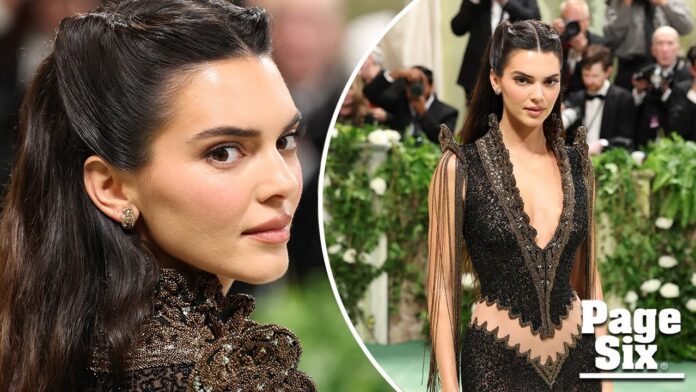The Givenchy dress worn by Jenner at the Met Gala raised questions about originality after comparisons with Winona Ryder’s 1999 look
Kendall Jenner’s choice of dress at the Met Gala on May 7 stirred up a fact-checking frenzy, leading to a debate about whether her claim of being the “first human” to wear the 1999 Givenchy dress was accurate. Jenner wore the Alexander McQueen-designed gown at the “Sleeping Beauties: Reawakening Fashion” themed event and stated in a Vogue interview with La La Anthony that she was the first to showcase it, as it had previously only been displayed on a mannequin.
Despite her claim, fashion enthusiasts and social media users quickly found what they believed to be evidence contradicting this assertion. An Alexander McQueen-dedicated Instagram account, @McQueen_Vault, posted a photo from 1999 showing Winona Ryder wearing a dress resembling Jenner’s. McQueen served as Givenchy’s chief designer during that era, prompting stylist Kim Russell to criticize the discrepancy, saying the brand was “too big to make silly stupid claims.”
Further fueling the controversy, *Perfect* magazine shared a post featuring Ryder wearing a dress identical to Jenner’s, stating it had been photographed by Warwick Saint for *Flaunt* magazine in 1999. However, a source close to Givenchy clarified to *The Cut* that Ryder wore a replica, while Jenner’s gown was indeed an original that had never been worn.
Ultimately, the incident appears to be a case of mistaken identity. The archival fashion world often leaves room for confusion, as replicas and slight variations complicate efforts to trace the origins of specific garments. While some critics remained unconvinced of Jenner’s claim, the Kardashian-Jenner family’s ability to court media attention ensures their continued involvement in archival-fashion conversations.
Analysis:
The controversy over Jenner’s dress claim highlights tensions between historical accuracy and public perception in the fashion industry. From a political standpoint, this case illustrates how public figures navigate their reputations, especially when their choices challenge established narratives within the fashion community. Jenner’s statement faced scrutiny because of its perceived disregard for historical precedence.
Sociologically, this debate underscores the importance of social media as a platform for collective fact-checking. Enthusiasts and professionals alike hold celebrities accountable for their public statements and fashion choices. This behavior reflects the digital-age phenomenon where online communities play a vital role in verifying claims and shaping narratives.
Economically, Givenchy and similar luxury brands depend on high-profile appearances like the Met Gala to reaffirm their value and relevance in a rapidly evolving industry. The controversy may inadvertently benefit Givenchy by drawing attention to its archival collections, stirring interest among collectors and fashion historians.
Locally, the incident resonates with the broader New York fashion scene, where archival fashion occupies a prominent space. Designers and curators often draw inspiration from their predecessors, creating a dynamic interplay between past and present.
From a gender perspective, the scrutiny on Jenner’s claims may reflect heightened expectations for women in fashion to uphold authenticity while meeting diverse aesthetic standards
